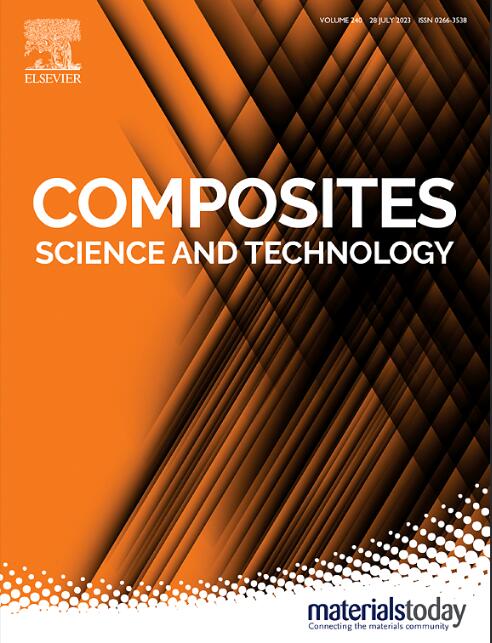Arch-inspired flexible dual-mode sensor with ultra-high linearity based on carbon nanomaterials/conducting polymer composites for bioelectronic monitoring and thermal perception
IF 9.8
1区 材料科学
Q1 MATERIALS SCIENCE, COMPOSITES
引用次数: 0
Abstract
With the rapid development of nanocomposites-based wearable electronic devices, there has been a significant increase in demand for flexible strain sensors capable of detecting mechanical force and temperature. Currently, the high linearity and wide sensing range of strain sensors are difficult to achieve. Herein, a flexible strain/temperature sensor (FSTS) is developed based on arch-inspired bionic structure and multi-walled carbon nanotubes/carbon black/polyaniline/silicone rubber nanocomposites. The prepared FSTS has both strain and temperature sensing capabilities. It functions as a FSTS with a high sensitivity of 3.432 and an ultra-low lower limit of detection (0.1 % strain). The wide linear detection range (0–190 % strain range) and ultra-high linearity (0.996) are realized simultaneously. These properties are attributed to arch-like fingerprint structure and multi-dimensional mixed materials. In addition, the designed FSTS has a resistive temperature coefficient of up to 57.301, a linearity of 0.999 over an ultra-wide temperature range (25–120 °C), and fine repeatability. Due to its improved sensing capabilities, FSTS can be applied to recognize sign language movements and intelligently temperature monitoring. This work introduces a novel approach to consider both linearity and sensing range, which has the potential to accelerate the development of composites-based strain sensor.

基于碳纳米材料/导电聚合物复合材料的具有超高线性度的拱形启发式柔性双模传感器,用于生物电子监测和热感知
随着基于纳米复合材料的可穿戴电子器件的快速发展,对能够检测机械力和温度的柔性应变传感器的需求显著增加。目前,高线性度和宽传感范围的应变传感器是难以实现的。本文设计了一种基于仿拱形仿生结构和多壁碳纳米管/炭黑/聚苯胺/硅橡胶纳米复合材料的柔性应变/温度传感器(FSTS)。所制备的FSTS具有应变和温度传感能力。它具有3.432的高灵敏度和超低检测下限(0.1%菌株)的FSTS功能。同时实现了宽线性检测范围(0 ~ 190%应变范围)和超高线性度(0.996)。这些特性是由拱形指纹结构和多维混合材料共同作用的结果。此外,设计的FSTS电阻温度系数高达57.301,在超宽温度范围(25-120℃)内线性度为0.999,重复性好。由于其改进的传感能力,FSTS可以应用于识别手语运动和智能温度监测。这项工作引入了一种考虑线性度和传感范围的新方法,这有可能加速基于复合材料的应变传感器的发展。
本文章由计算机程序翻译,如有差异,请以英文原文为准。
求助全文
约1分钟内获得全文
求助全文
来源期刊

Composites Science and Technology
工程技术-材料科学:复合
CiteScore
16.20
自引率
9.90%
发文量
611
审稿时长
33 days
期刊介绍:
Composites Science and Technology publishes refereed original articles on the fundamental and applied science of engineering composites. The focus of this journal is on polymeric matrix composites with reinforcements/fillers ranging from nano- to macro-scale. CSTE encourages manuscripts reporting unique, innovative contributions to the physics, chemistry, materials science and applied mechanics aspects of advanced composites.
Besides traditional fiber reinforced composites, novel composites with significant potential for engineering applications are encouraged.
 求助内容:
求助内容: 应助结果提醒方式:
应助结果提醒方式:


